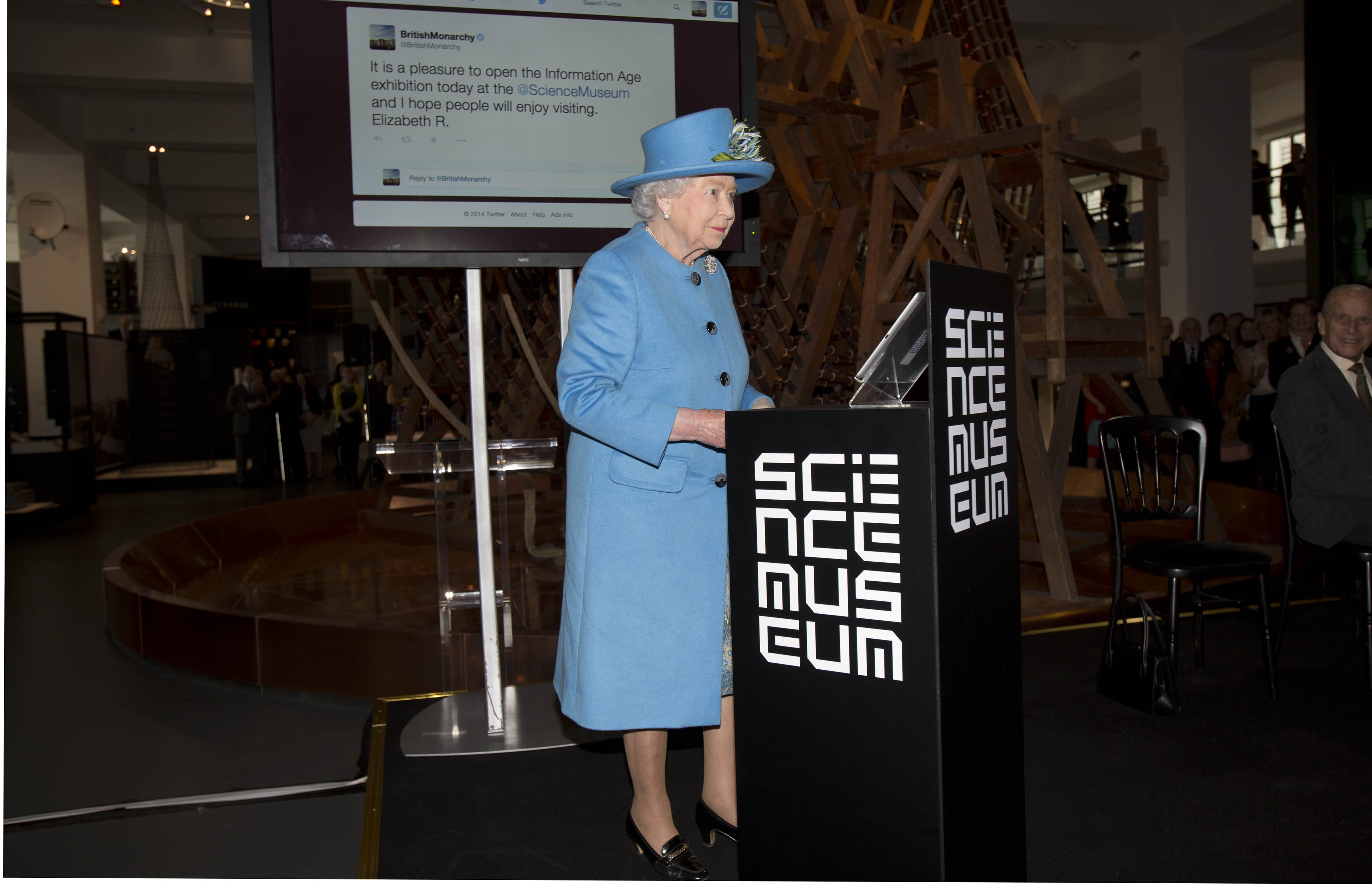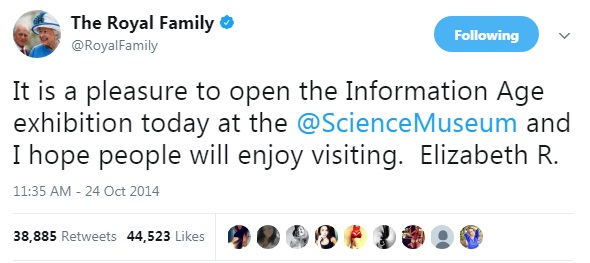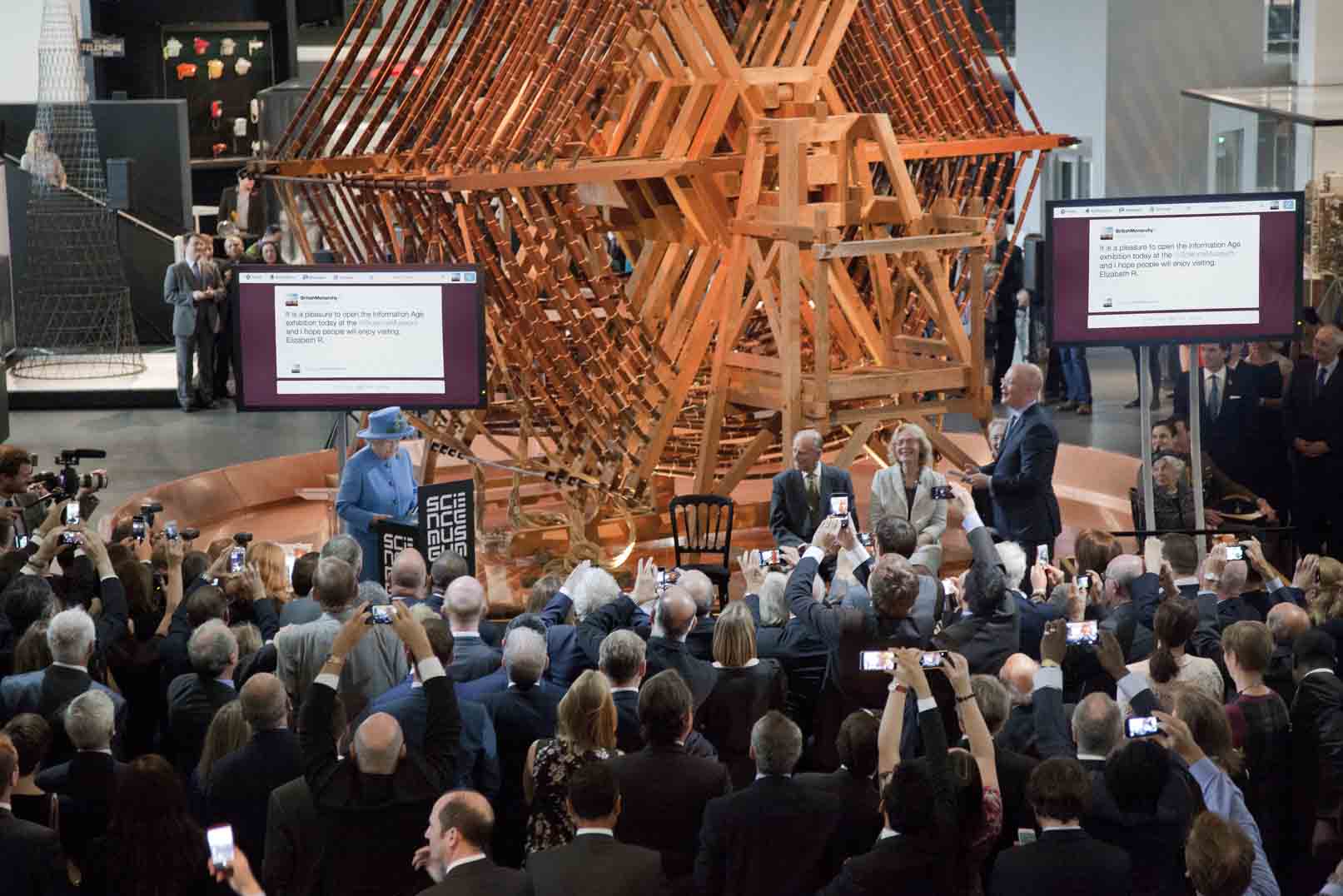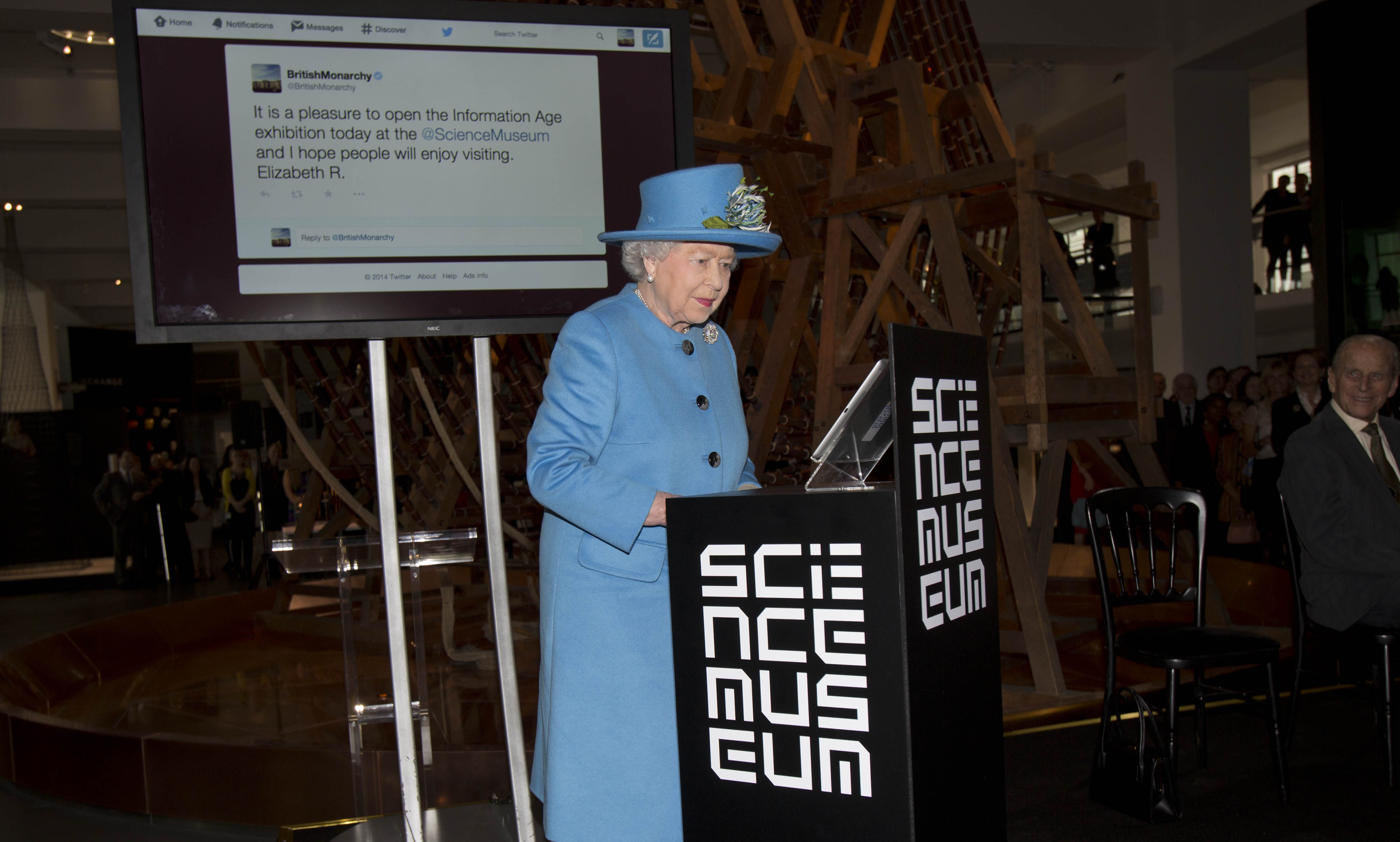Her Majesty The Queen this morning opened the pioneering Information Age gallery at the Science Museum by sending her first tweet to the world, 76 years after The Queen’s first visit to the museum.

The Queen and His Royal Highness The Duke of Edinburgh had earlier toured the landmark gallery, which explores the six networks that have transformed global communications, listening to personal recollections of people whose first experience of television was watching her Coronation in 1953.
Inviting Her Majesty to open the gallery, Science Museum Director Ian Blatchford remarked on how royalty had embraced communications technology from the day Queen Victoria took an interest in the invention of the telephone, which was demonstrated to her in January 1878 by Alexander Graham Bell at Osborne House, Isle of Wight.
“Your Majesty has followed in this tradition,” said Mr Blatchford while addressing around 600 guests including communications entrepreneurs, authors and experts, from Baroness Lane Fox, Hermann Hauser and Mo Ibrahim to Prof Steve Furber, James Gleick, Tom Standage and Sir Nigel Shadbolt.
“You made the first live Christmas broadcast in 1957,” he added, “and an event relished by historians took place on 26 March 1976, when you became the first monarch to send an email, during a visit to the Royal Signals and Radar Establishment. “
Then Mr Blatchford invited Her Majesty to join him to “send your first Tweet”.
The Queen removed a glove to send her pioneering tweet.

This marked the first time that a reigning British monarch contributed one of the half billion or so tweets that are sent every day.

The Queen has a long relationship with the Science Museum and first visited in March 1938, as a princess, a few years after it launched a pioneering Children’s Gallery.
Today she explored Information Age: Six Networks That Changed Our World, the first museum gallery dedicated to the history of information technologies, containing more than 800 iconic objects and six state-of-the art interactive displays in story boxes connected by an elevated walkway.
The £16 million project saw collaborations with leading artists and thinkers, including Olivier award-winning video and projection designer Finn Ross, artists Matthew Robins and Rafael Lozano-Hemmer, broadcaster Bonnie Greer and developer of the world wide web, Sir Tim Berners-Lee.
From the dramatic story of the laying of the first transatlantic telegraph cable that connected Europe and North America to the birth of the modern smartphone, it looks at how today’s world was forged with six communication networks: the telegraph; the telephone, radio and television broadcasting; satellite communications; computer networks; and mobile communications.
Lead curator Dr Tilly Blyth showed The Queen and The Duke of Edinburgh around the exhibition, from the bright yellow call box from Cameroon to the BBC’s first radio transmitter from 1922 to the monumental 6-metre high aerial tuning inductor from Rugby Radio Station that lies at the heart of the gallery.
This strangely beautiful web of copper and wood was once part of the most powerful radio transmitter in the world and was donated to the Science Museum by BT.
Over 410,000 people follow the Science Museum on Twitter via @sciencemuseum.
We use twitter to share as many fascinating objects (some weird, others wonderful) and stories from our exhibitions and collections as possible. In the past we have shared science jokes and organised a Q&A with an astronaut.
We’ve even taken our followers inside Charlie Brown, the Apollo 10 Command Module.
Our curators regularly take over the @sciencemuseum account, taking hundreds of thousands of followers on Twitter tours of their favourite objects. In the past, @rooneyvision has shared his story of how we made the modern world, with @ali_boyle selecting her favourite objects from our astronomy collection (you can read the #CosmosTour here).
The @ScienceMuseum account was also at the heart of the Great British Innovation vote which attracted more than 50,000 votes from the public for their favourite innovation.
We love reading tweets from the millions of you who visit each year, sharing stories of visits, getting engaged and even dancing under our rockets.
From astronauts to pop stars, we have had the pleasure of meeting and tweeting many famous faces. Astronaut Gene Cernan, the last man on the moon, joked with us about driving a NASA moon buggy, with Chris Hadfield sharing stories of life on board the International Space Station, and will.i.am joining us for a tour of the museum.
And it was a remarkable day when both Prof Stephen Hawking and Nobel prize-winner Prof Peter Higgs met in the Science Museum for our Collider exhibition opening.
This year a record breaking 450,000 young people visited the Science Museum on educational trips, or benefitted from its outreach programme, more than any other UK museum. Our Learning team (@SM_Learn) helps schools to plan their visits as well as sharing science demos and experiments that wow visitors every day.
Information Age has been made possible through the generous support of the Heritage Lottery Fund, BT (Lead Principal Sponsor), ARM (Principal Sponsor), Bloomberg Philanthropies and Google (Principal Funders). Major Funders include the Garfield Weston Foundation, the Wolfson Foundation, the Bonita Trust and the Motorola Solutions Foundation.
Additional support has been provided by Accenture (Connect Circle Sponsor) as well as the Institution of Engineering and Technology (IET), Cambridge Wireless (CW), the David and Claudia Harding Foundation and other individual donors. The Science Museum would also like to thank the BBC for their assistance.
